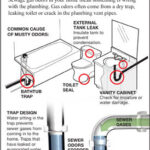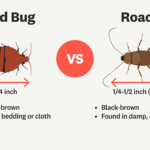To fix water leaking under a garage door, first identify the source of the leak. Then, ensure the door’s bottom seal is intact and properly aligned.
Dealing with water leakage under your garage door can be frustrating, yet it’s a common issue that homeowners face. This problem not only poses a risk to the items stored in your garage but can also lead to more significant structural damage if not addressed promptly.
The key to solving this issue lies in early detection and taking the right corrective actions. Ensuring the integrity of your garage door’s seal and alignment plays a crucial role in preventing water from seeping in. This article provides a straightforward guide on how to tackle water leakage, aiming to protect your garage from potential water damage effectively. With the right approach, maintaining a dry and secure garage becomes an achievable task.

Credit: m.youtube.com
Identifying The Source Of The Leak
Water leaking under a garage door can cause damage. It’s vital to find the leak’s source. Proper identification is the first step to a dry garage.
Visual Inspection
Begin with a thorough visual check. Look for signs of water trails or marks. Check the garage door’s bottom seal. Inspect for gaps or damage. See if the door aligns with the ground. Look at the surrounding walls and floor for cracks.
- Check door seal: Look for wear or gaps.
- Examine alignment: The door must be level with the floor.
- Inspect walls and floor: Search for cracks or openings.
Water Testing
For a precise leak location, perform a water test. Use a hose to mimic rainfall. Watch how water flows near the garage door. Notice any entry points. This helps pinpoint exact problem areas.
- Simulate rain: Use a hose to direct water.
- Observe water flow: Look for leaks as water runs.
- Identify entry points: Spot where water enters.
Common Causes Of Water Leakage
Water seeping under a garage door can cause damage to stored items and the garage’s structure. Understanding the common causes of water leakage is crucial in finding the right solution. Let’s explore some typical reasons why water might invade your garage space.
Damaged Seals
Weather stripping around the garage door is the first defense against water. Over time, these seals can deteriorate. Tears or cracks in the seal allow water to penetrate. Regular checks can reveal seal damage.
Uneven Flooring
Garage floors should slope slightly towards the driveway. This guides water out. An uneven floor can collect water instead. Water pools and eventually seeps under the door.
Blocked Drainage
Drains are meant to redirect water away from the garage. Leaves and debris can block these. A blocked drain leads to water backup. Keeping drains clear is essential to prevent leakage.
| Cause | Problem | Solution |
|---|---|---|
| Damaged Seals | Tears or cracks | Replace seals |
| Uneven Flooring | Improper slope | Level floor |
| Blocked Drainage | Debris accumulation | Clean regularly |
Tools And Materials Needed
Before fixing a water leak under a garage door, gather the right tools and materials. This ensures a smooth repair process. Proper preparation leads to lasting results. Now, let’s explore what you’ll need.
Sealants
A good sealant is crucial for waterproofing gaps. Choose a high-quality, waterproof sealant designed for outdoor use. Options include silicone or polyurethane-based products. These create a strong barrier against water.
Weather Stripping
Weather stripping is essential for a tight seal. It prevents water from entering under the garage door. Look for durable, rubber or vinyl weather strips. They withstand harsh weather and wear.
Concrete Patch
For cracks in the garage floor, a concrete patch kit is necessary. It fills and seals cracks effectively. Ensure the patch material is suitable for concrete surfaces and is weather-resistant.
Here’s a quick list of tools and materials:
- Caulking gun
- Putty knife
- Wire brush
- Chisel and hammer
- Concrete patch kit
- Weather stripping
- Waterproof sealant
- Clean cloth
- Bucket and water
With these tools and materials, you’re set to fix the leak. Apply the concrete patch, add weather stripping, and seal gaps. Your garage door will be leak-free in no time!

Credit: www.doormaticgaragedoors.co.uk
Sealing The Garage Door Bottom
Sealing the Garage Door Bottom is a key step in stopping water from leaking under your garage door. This fix not only keeps your garage dry but also saves energy. Let’s explore how to choose the right seal and install it properly.
Choosing The Right Seal
Several types of seals exist for garage doors. Each type serves different needs. The most common are rubber and brush seals.
- Rubber seals are great for smooth, even floors.
- Brush seals work well with uneven surfaces.
Measure your door’s width and the gap size under it before buying a seal. This ensures you get the right fit.
Step-by-step Installation
- Prepare the Area: Clean the bottom edge of the door and the floor. Remove any dirt or debris.
- Measure and Cut: Measure the door’s width. Cut the seal to this length.
- Attach the Seal: Most seals slide into a channel at the door’s bottom. If yours does not, use adhesive or screws to secure it.
- Test the Seal: Close the door to check the seal’s fit. Adjust as needed.
Proper installation keeps water out. It also improves your garage’s insulation.
Correcting Floor Slope Issues
Correcting Floor Slope Issues is crucial to stop water from leaking under your garage door. A wrong slope directs water towards your garage instead of away from it. Let’s learn how to check and fix this problem.
Assessing Slope
First, we need to understand the slope of your garage floor. Use a long level or a laser level. The floor should slope towards the driveway, not into the garage.
- Check the length of your garage with the level.
- Mark spots where the level shows a dip towards the garage.
- Measure how much the floor needs to rise to correct the slope.
Concrete Resurfacing
Fixing the slope might require concrete resurfacing. This method adds a new layer of concrete over the existing floor. It corrects the slope issue.
- Clean the floor. Remove dirt and oil spots.
- Mix concrete resurfacer as per instructions.
- Apply the mixture. Use a trowel for an even layer.
- Let it dry. Check the product’s drying time.
Remember, a proper slope keeps water out. Check the slope regularly. Fix any issues to protect your garage.
Clearing Drainage Systems
Water leaking under a garage door can cause damage.
Often, the issue lies with blocked drainage systems.
Regular maintenance helps prevent leaks.
Clearing these systems is crucial.
Locating Drainage Points
Drainage points direct water away from your garage.
They are usually found along the driveway or garage perimeter.
Look for grates or small openings on the ground.
These are the drainage points.
Unclogging Techniques
Over time, these points can become clogged.
Leaves, dirt, and debris are common culprits.
Here are ways to unclog them:
- Manual Removal: Put on gloves. Remove visible debris.
- Hose Flushing: Use a hose. Direct water into the drain. This can loosen clogs.
- Plumbing Snake: For stubborn blockages. Insert the snake into the drain. Twist to clear the clog.
After unclogging, test the flow. Pour water into the drainage point.
Ensure it flows away smoothly. If not, repeat the unclogging process.
Preventive Measures For Future Leaks
Water leaking under a garage door can cause big problems. Preventing future leaks saves time and money. Use these tips to keep your garage dry.
Regular Maintenance
Check seals and weatherstripping twice a year. Look for cracks, wear, and tear. Replace them if needed. This keeps water out.
Clean the garage door tracks regularly. Remove debris that could block the door’s seal. Use a brush or vacuum for best results.
Inspect the garage floor and door alignment. Make adjustments if the door doesn’t close properly. A well-aligned door prevents water entry.
Improving Water Deflection
Install a threshold seal at the door’s base. It directs water away from the garage. This is a barrier against water.
Gutters and downspouts help a lot. Place them above the garage door. They catch rain and channel it away.
Use landscaping to your advantage. Slope the ground away from the garage. This guides water elsewhere.
Remember, regular care stops leaks before they start. Apply these tips to keep your garage safe and dry.
Professional Help Vs. Diy
Deciding between professional help and DIY for a leaking garage door is vital. Water seeping in can damage not just the garage, but also the items stored inside. Understanding when to seek expert assistance or tackle the issue yourself is crucial.
When To Call An Expert
Expert intervention becomes necessary under certain conditions. Consider these scenarios:
- Severe leakage: Indicates a complex underlying issue.
- Recurring problem: DIY fixes didn’t work.
- Structural damage: Professional skills required.
Experts possess the right tools and knowledge. They ensure a lasting solution, preventing future leaks and potential damage.
Cost-benefit Analysis
Conduct a cost-benefit analysis before deciding. DIY can be cost-effective for minor leaks. Yet, it might not provide a permanent fix. Consider these aspects:
| Cost Factor | DIY | Professional |
|---|---|---|
| Materials | Lower cost | Higher cost |
| Time Spent | Varies based on skill | Less time |
| Longevity | Potential for frequent fixes | Long-term solution |
Professional repairs might seem expensive upfront. They offer long-term benefits and peace of mind. DIY suits a tight budget, but consider the risks involved.

Credit: www.reddit.com
Frequently Asked Questions
Why Is Water Leaking Under My Garage Door?
Water leakage under garage doors can occur due to worn seals, improper alignment, or drainage issues, leading to unwanted water ingress.
What Seals Prevent Garage Door Water Leaks?
Weatherstripping seals around the garage door help prevent water leaks by creating a tight barrier against the elements.
Can Misalignment Cause Garage Door Leaks?
Yes, if a garage door is misaligned, it can create gaps that allow water to seep through, resulting in leaks under the door.
How Do I Realign My Garage Door?
Realigning a garage door typically involves adjusting the tension of the cables and ensuring the tracks are level and properly aligned.
Are Drainage Solutions Effective For Leaks?
Improving drainage with solutions like sloped driveways or trench drains can effectively redirect water away from the garage door area, reducing leaks.
Conclusion
Dealing with a leaky garage door can be frustrating. Yet, with the right approach and tools, it’s a manageable task. Remember, regular maintenance is key to preventing future leaks. For more detailed solutions, revisit the steps outlined in this post.
Don’t let water damage disrupt your home—act swiftly and seal that garage door effectively!




